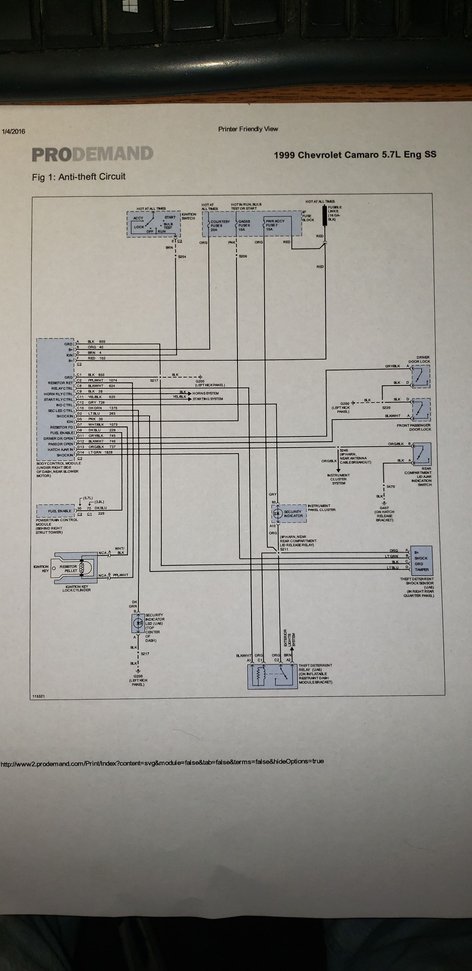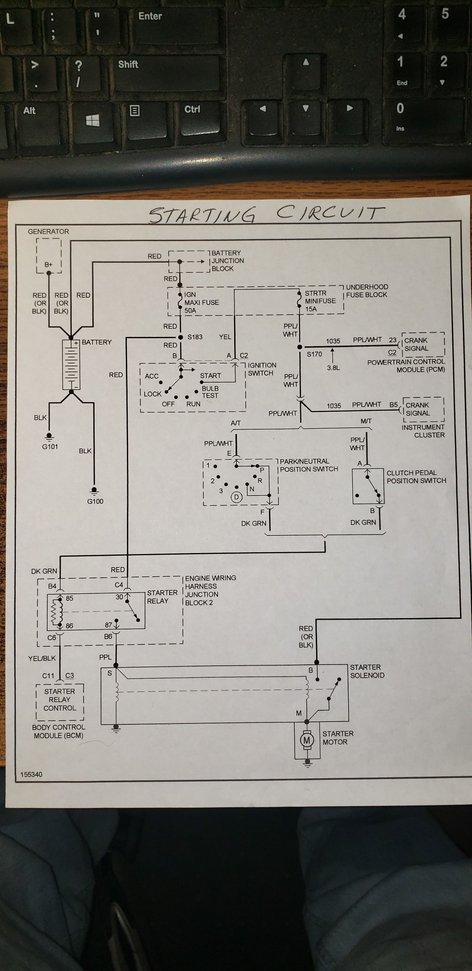Security light/bcm
#1
My 01 Firehawk left me stranded today. Shut off engine and removed key and noticed the security light pop on. Tried to start it and nothing. Went inside the grocery store and did my shopping. About 20 minutes later, came out and again, no start. Had a friend come by to pick me up, this time disconnecting the battery. No start. Came back about 90 minutes later with the spare key. Now, here is the funny thing. When I left the car, I set the alarm with my key fob. When I came back, I used the door key to unlock and the alarm sounded. Used the fob to shut it off and then got in with the spare ignition key. Inserted it and for a split second, the horn sounded, but ultimately a half a second later, we had ignition. Had an issue about a year ago and ended up doing both ignition cylinder AND VATS bypass mod. This is the first time since the VATS bypass that this problem has come back. So, since I have done both of the required repairs, why could this still be happening? A wiring issue between the bypass and the BCM?
#3
If you have a VATS bypass then switching keys would have nothing to do with it starting - the contacts in the ignition cylinder aren't even connected after the bypass so that's just a coincidence. The alarm sounding when opening the door without using the fob is normal behavior. The alarm system is not connected to the manual door locks (only to the BCM controlled keyless entry) so unlocking with the key and then opening the door looks like a break-in to it. Depending on how the alarm is programmed, you have about 30 seconds to get in and turn the ignition to the run position before the alarm sounds (it can also be program to alert immediately).
The SECURITY light (in the instrument cluster) is the big clue. When it goes on solid, VATS sees a key resistance value but not the right one. If it flashes then VATS can't see a key resistor at all. In this case, your VATS bypass resistors are loose in their connection or, if you had to use multiple resistors, one or more of them has become disconnected.
The SECURITY light (in the instrument cluster) is the big clue. When it goes on solid, VATS sees a key resistance value but not the right one. If it flashes then VATS can't see a key resistor at all. In this case, your VATS bypass resistors are loose in their connection or, if you had to use multiple resistors, one or more of them has become disconnected.
The following users liked this post:
Alan Lowery (04-30-2023)
#4
If you have a VATS bypass then switching keys would have nothing to do with it starting - the contacts in the ignition cylinder aren't even connected after the bypass so that's just a coincidence. The alarm sounding when opening the door without using the fob is normal behavior. The alarm system is not connected to the manual door locks (only to the BCM controlled keyless entry) so unlocking with the key and then opening the door looks like a break-in to it. Depending on how the alarm is programmed, you have about 30 seconds to get in and turn the ignition to the run position before the alarm sounds (it can also be program to alert immediately).
The SECURITY light (in the instrument cluster) is the big clue. When it goes on solid, VATS sees a key resistance value but not the right one. If it flashes then VATS can't see a key resistor at all. In this case, your VATS bypass resistors are loose in their connection or, if you had to use multiple resistors, one or more of them has become disconnected.
The SECURITY light (in the instrument cluster) is the big clue. When it goes on solid, VATS sees a key resistance value but not the right one. If it flashes then VATS can't see a key resistor at all. In this case, your VATS bypass resistors are loose in their connection or, if you had to use multiple resistors, one or more of them has become disconnected.
The following users liked this post:
Alan Lowery (04-30-2023)
#6
This is an old thread you've responded to but I'm having this issue as well with my 99 build. One solution is to do a VATS bypass and you can Google this to find out how it's done. I just checked for continuity between the two wires that connect to the PPL/WHT and WHT/BLK wires which goes to the BCM and I got no resistence so I'm fairly certain that the wire connection in the ignition switch is broken causing my no start issue. Put a multimeter on the key and got 4.64K ohms so I could just solder a resistor between the two white wires and that should allow the car to start. I also read somewhere in a post that you can ground the yellow/black wire that goes from the BCM to the starter relay and that will allow you to start the car but I'm not sure so I'm hesitant. I've been looking for a wiring diagram for the BCM but haven't found one yet.
Last edited by 01CamaroSSTx; 05-01-2023 at 01:09 PM.
#7


You could disable VATS in the PCM with HPtuners so the BCM does not command fuel and then ground C11 out of the BCM to the starter relay to bypass the VATS and not use resistors. If the security light bothers you then pull the gauge panel out and paint that and the other areas on the panel that you don't want to see BRAKE, ABS INOP, SES, etc. with black paint and remove the bulbs if any.
Trending Topics
#8
DO NOT ground C11 out of the BCM... it won't do anything for you. Ground the yellow/black wire at starter relay. (yes it goes to the BCM, but you want to ground the starter relay's coil circuit not the BCM circuit).
#10
Okay so if C11 comes out of the BCM and then goes straight to the starter relay then what's stopping me from grounding that wire at any point post starter relay? I wouldn't be grounding the wire coming out of the BCM just the end of that cut wire which goes to the starter relay. Just want a clarification on this in the event that the BCM fails and the resistor I installed no longer worked anymore.
#11
Yes, you are correct. I was trying to point out that it's the starter relay end of the wire which has to be grounded rather than the end going into the BCM and I probably could have phrased it better.
Usually when describing the cutting and splicing of factory wiring it's done closest to the device it affects - in this case the starter relay. The reasoning is that coming back to it some time later (perhaps years later), the purpose of the wiring change is much more obvious. Anyone looking at the yellow/black wire going to ground right next to the starter relay would understand what it was doing (even if they don't know precisely why), but seeing a wire grounded among the 29 wires in the blue connector at the BCM would probably have to do some research to determine why it was there. Also, the starter relay is more easily accessible than the BCM.
Electrically, it makes no difference which end of the wire you cut, but close to the relay is more practical for reasons other than just electrical. That's also the reason that installing the resistor(s) under the steering column is more practical than doing it across C2 and D7 at the BCM.
Usually when describing the cutting and splicing of factory wiring it's done closest to the device it affects - in this case the starter relay. The reasoning is that coming back to it some time later (perhaps years later), the purpose of the wiring change is much more obvious. Anyone looking at the yellow/black wire going to ground right next to the starter relay would understand what it was doing (even if they don't know precisely why), but seeing a wire grounded among the 29 wires in the blue connector at the BCM would probably have to do some research to determine why it was there. Also, the starter relay is more easily accessible than the BCM.
Electrically, it makes no difference which end of the wire you cut, but close to the relay is more practical for reasons other than just electrical. That's also the reason that installing the resistor(s) under the steering column is more practical than doing it across C2 and D7 at the BCM.






